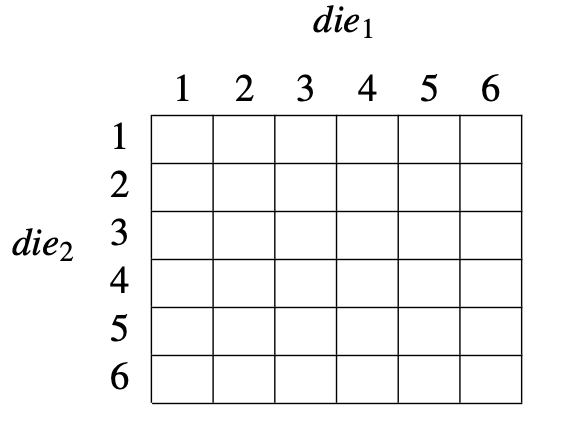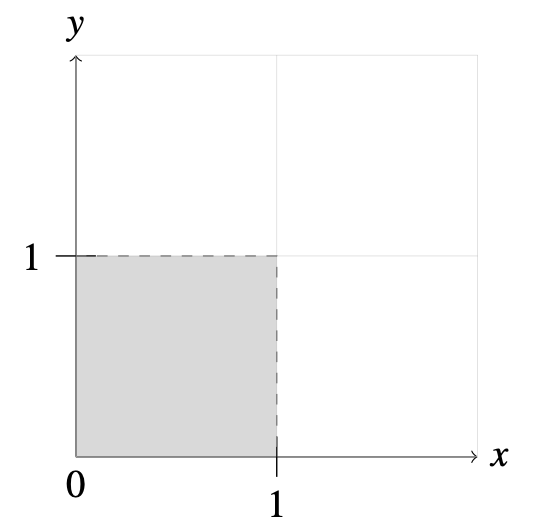Probabilities
Methodology
Steps to perform a probabilistic model:
- Specify sample space.
- Define probability law (must align with probability axioms).
- Identify event of interest.
- Calculate…
Sample Space
A sample space is a set of all possible outcomes from an experiment.
Sample \ Space = \{\text{Heads}, \text{Tails}\}
An experiment is any procedure that can be repeated and has a well-defined set of outcomes.
\text{Flipping a fair coin}
An outcome is the end result of an experiment, or an element in the sample space.
\text{Heads}
Experiment: Rolling two fair die at the same time.
Sample \ Space = \{ (x, y) : x,y \in \mathbb{N}, 1 \leq x, y \leq 6 \}

Experiment: Measure two continuous variables in the range [0,1]
Sample\ Space = \{ (x, y) : x,y \in \mathbb{R}, 0 \leq x, y \leq 1 \}

Events and Experiment
An event is a subset of the sample space.
Events are important because they ultimately get assigned probabilities.
Experiment: Rolling a die once.
Sample \ Space = \{1,2,3,4,5,6\}
What is the event of rolling a 1?
\{1\} \subseteq \{1,2,3,4,5,6\}
What is the event of rolling an odd number?
\{1, 3, 5\} \subseteq \{1,2,3,4,5,6\}
Probability Axioms and Probability Law
Suppose A and B are events.
Kolmogorov probability axioms are the foundations of axiomatic probability theory:
- Nonnegativity: P(Event) \geq 0
- Normalization: P(Sample\ Space) = 1
- Additivity: If A \cap B = \emptyset, P(A \cup B) = P(A) + P(B)
Probability laws are additional axioms mathematically derived from Kolmogorov probability axioms.
Experiment: Rolling two fair die at the same time.
Let all outcomes be equally likely.
P(A) = \frac{|A|}{|Sample\ Space|}

Find the following probabilities:
- P(die_1 = 1)
- P(\text{max}(die_1, die_2) = 2)
- P(die_1 = 1) = \frac{6}{36} \approx 0.1\bar{6}
- P(\text{max}(die_1, die_2) = 2) = \frac{2}{36} \approx 0.0\bar{5}
Experiment: Measure two continuous variables in the range [0,1]
Sample\ Space = \{ (x, y) : x,y \in \mathbb{R}, 0 \leq x, y \leq 1 \}

Find the following probabilities:
- P(x = 0.5 , y = 0.5)
- P(x+y \geq 1)
- P(x = 0.5 , y = 0.5) = 0
- P(x+y \geq 1) = 0.5